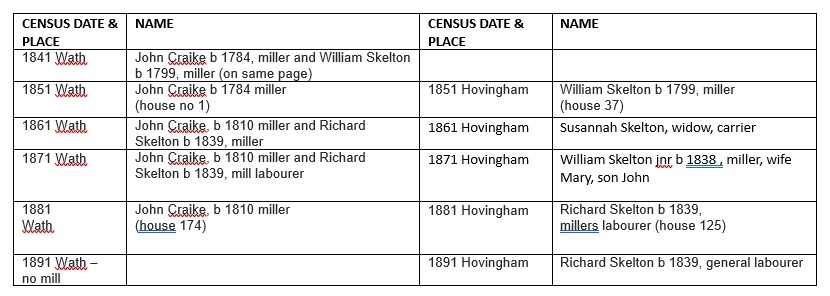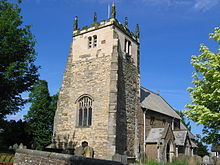
All Saints Terrington Yorkshire
William Skelton was born in 1799 in the Yorkshire village of Terrington. He was baptised there in the parish church on 14 April 1799.
He was the son of William Skelton (1759-1835) and Jane Bonwell (1759-1824). This William was baptised on 9 December 1759 in Hovingham the son of Robert the local butcher and wife Mary Paddinson.
William and Jane were married on 23 July 1787 in Hovingham, and he was described as being from Slingsby, 2 miles away. Jane was baptised in 1759 at Hovingham, and was the daughter of Matthew Bonwell of Terrington. They were both buried at Terrington.
William (junior) grew up in a large family, one of 10 children born to William and Jane.
William, aged 25, married Susannah Craike on 11 June 1827 in Terrington, Yorkshire. The couple had obtained a marriage license, and it states that they had been intending to marry at the brides home parish church of St Michael Le Belfrey in York, but instead they married in Terrington, the groom’s home parish. (English marriage registers 1538-1973). Susannah seems to have been working in York before her marriage, as that is her stated parish at the time.
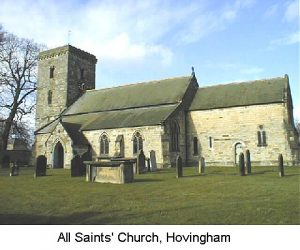
Susannah was the daughter of John Craike (1784-1854) and Susannah Banks (1776-1855).
She was born at Wath Mill, and baptised in the parish church on 26 January 1808 in Hovingham.
Her father John C raike was the miller at the corn mill in Wath, and in the 1851 census was stated to be a farmer of 40 acres employing 2 labourers. His land was most likely supplying the mill with corn. He was the third generation miller at Wath.
William Skelton was the miller at the nearby Hovingham Mill. The 1851 census confirms there were two mills within a short distance of each other, with Susannah Craike’s father running one, and her husband William Skelton, the other.
Rydale Family History Society (Feb 2023) confirmed that the Hovingham Mill was originally a corn mill, but later became a saw mill. They stated that “The mill was on the left as you leave Hovingham and drive up the park towards Coulton. There is a house called Wool Knoll and there is a lane to the left before the gates of the house which leads to the site of the Hovingham mill.”
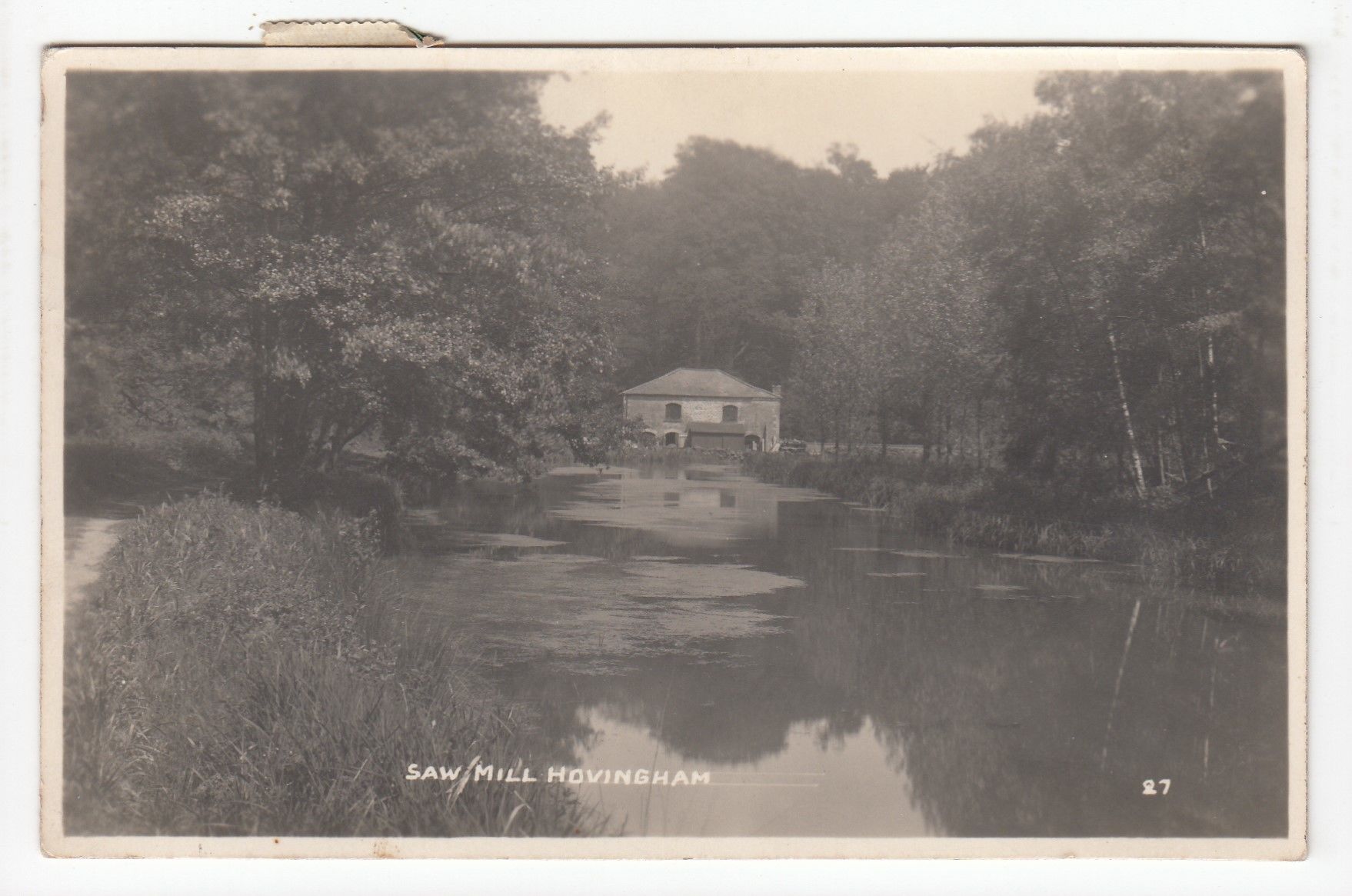
Hovingham originally a Corn Mill then later a Saw Mill
The above picture postcard of Hovington Mill (for sale on an English auction site) has an interesting letter address written on the reverse of the card addressed to Mrs Skelton of King Edward Rd, Woodhall Spa.
William and Susannah had nine children all born in Hovingham, Yorkshire –
- 1827 John b and d 1827 Hovingham
- 1830 Thomas d 1907 Eccleshill, marr Ann Mason and Ann Barker (widow) nee Watson
- 1833 John b Hovingham, d 1879 Garforth
- 1835 Ellinor b Hovingham d married Henry Hare
- 1837 William b Hovingham d 1918 Eston married Mary Ann Cooper
- 1839 Richard b Hovingham d 1895 York, married Mary Ann Ruston
- 1842 Robert b Wath d 1923 Hovingham, married Sarah Young
- 1846 Susannah b Hovingham d 1933 Winestead, Yorkshire, married William Milner
- 1859 Jane b Hovingham d 1872 Hovingham, unmarried.
The Wath Mill also had a kiln to dry oats and other grains before milling. Grain can only be milled when the water content is below about 14%. Oats were the main diet of farmers and leadminers in the Yorkshire Dales. They ate them ground as porridge, oatcakes, puddings and gruel. Farmers sometimes grew or bought oats and took them to the miller in their own towns to be dried and then ground.
In the 1841 census William and Susannah are living and working in the Wath Mill along with their children Thomas, John, Eleanor, William and Richard. Susannah’s parents and family are also living there.
Ten years later in 1851 William and Susannah had moved to the nearby Hovingham Mill with seven of their children.
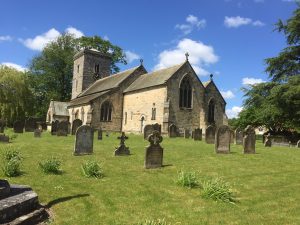
Hovingham Cemetery
William Skelton only lived another three years, passing away at Wath on 19 July 1854.
It appears William diversified and as well as milling transported goods (probably his owned milled goods) as well.
Miller’s needed to be good at several different trades to carry out their work such as farming, equipment repairs, delivering their grain, etc.
On his death a newspaper notice described him –
Malton Messenger Newspaper – Wednesday, July 19, at Hovingham, aged 55, Mr. Wm. SKELTON, for nearly for nearly 22 years carrier between York and Hovingham.
He was buried in the Hovingham Cemetery on 22 July 1854 aged 55 years.
Susannah lived for another 26 years, passing away in Hovingham in April 1880, and was also buried at Hovingham on 9 April 1880.
In both 1861 and 1871 John Craike (junior) is running the Wath Mill (farmer of 44 acres and miller employing 4 men) with his wife Mary, and sister Susannah’s son Richard Skelton is working there as a miller’s labourer.
After the death of William Skelton senior, his son William Skelton junior b 1837 was the miller at Hovingham and appears in the 1871 census as the miller with his wife Mary Ann and son John. By 1881 however he was working as an agricultural labourer in Hovingham, and his brother Richard was now the miller at Hovingham.
In the 1881 census Richard Skelton is described as the miller’s labourer (to Mr Fred Sunley) at the nearby Hovingham corn mill. He resides there with his wife Mary Ann, and children William and Mary.
By 1891 it seems the milling dynasty of the Craike and Skelton families had ended and Richard Skelton was working as a general labourer in the census.
In 1889 John Craike junior died, and the following year in 1890, Wath Mill and Farm were sold by Castle Howard Estate to Hovingham Estate along with Moor House Farm (Yorkshire Herald 27 Oct 1890). In 1900, there were hopes by Hovingham Estate that the mill could provide a water supply for the surrounding villages, but the scheme never reached fruition.
CENSUS RECORDS
